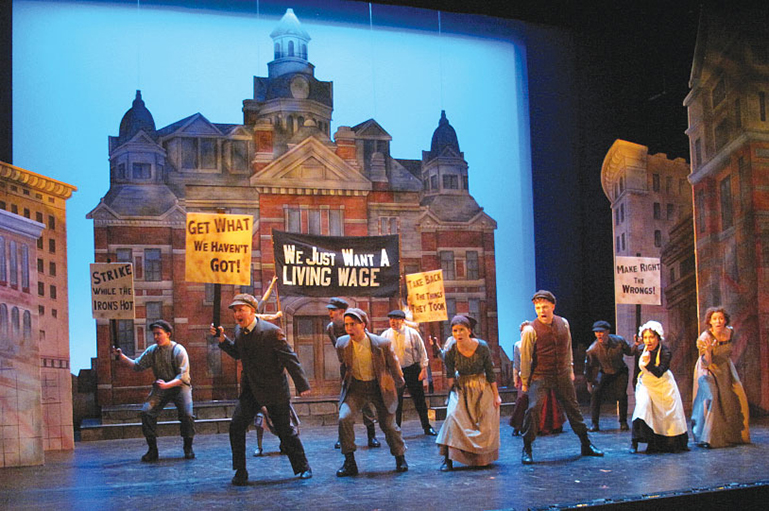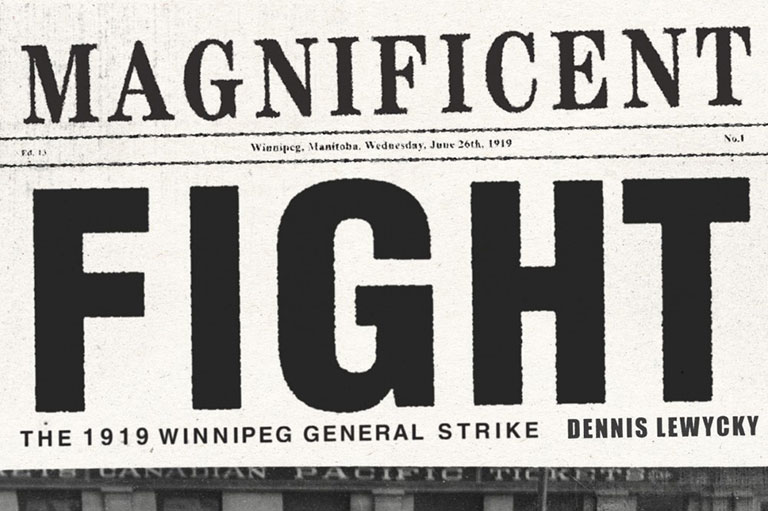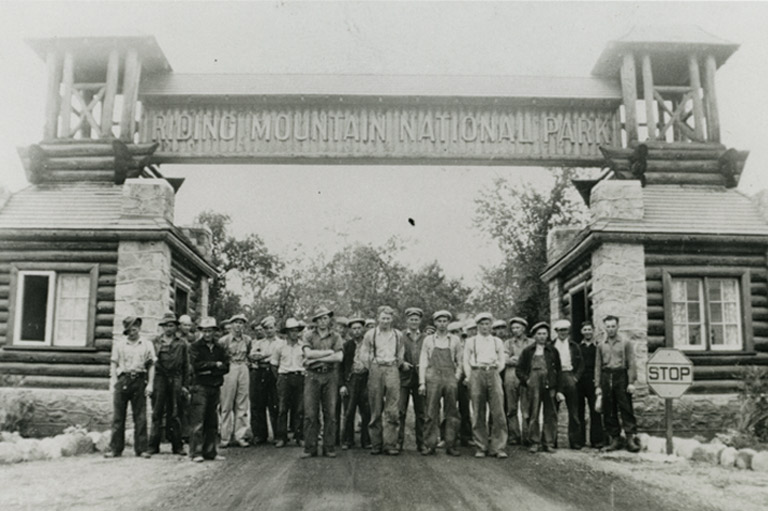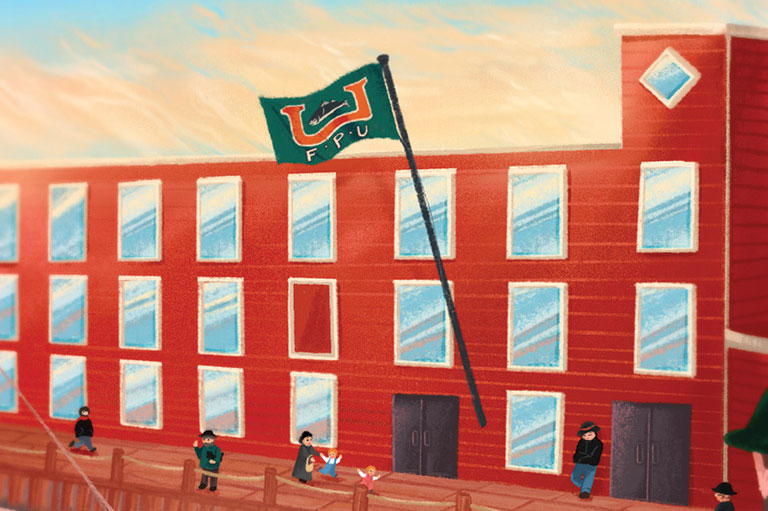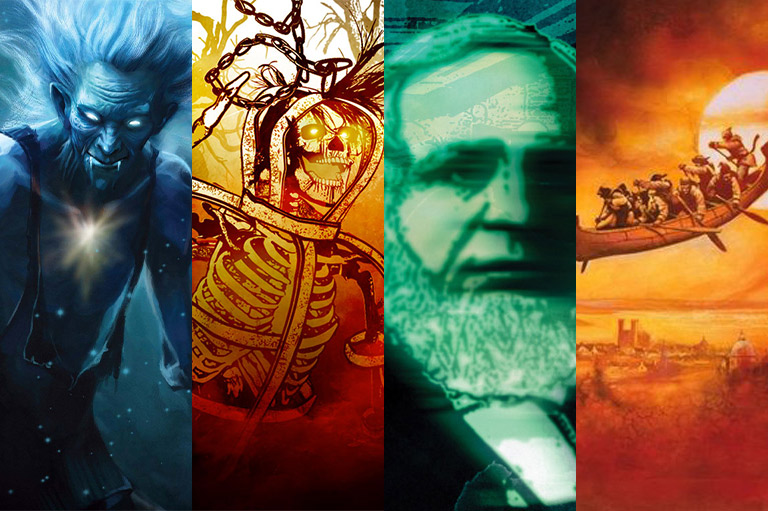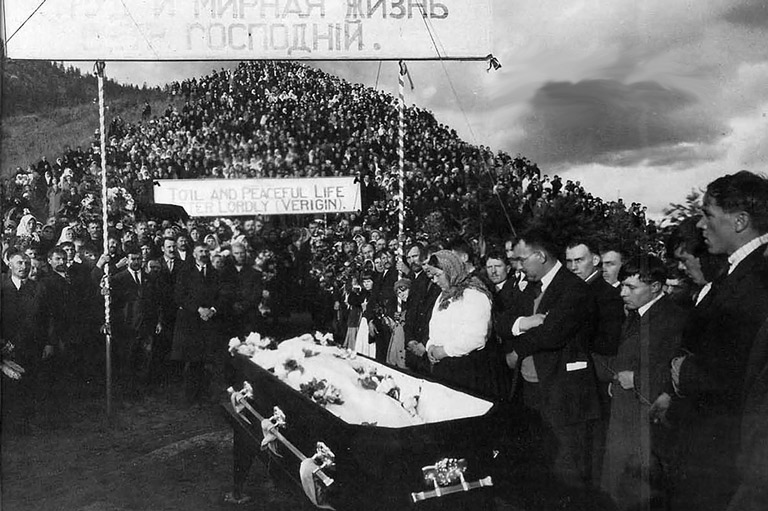Tipping Point
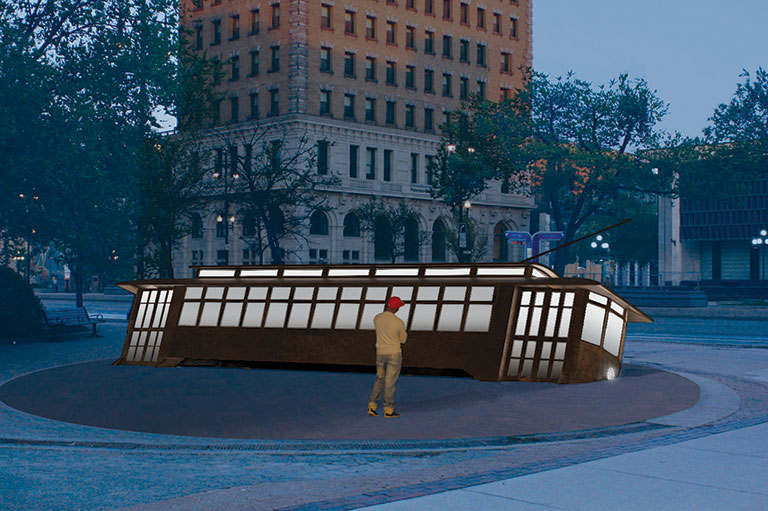
This summer, commuters driving down the busiest stretch of Winnipeg’s Main Street and people living, working, or heading to events in the city’s Exchange District will see a streetcar leaning on an angle and sinking into the surface of the plaza outside Pantages Playhouse Theatre. It’s not a transit accident — it’s Bloody Saturday, a new public sculpture by Bernie Miller and Noam Gonick that will be located across the street from Winnipeg’s current city hall.
The plan is for the sculpture to be unveiled June 21, a century to the day after the bloodiest event of the Winnipeg General Strike. On a Saturday six weeks into the 1919 strike, tens of thousands of people gathered on Main Street at the former city hall to support striking workers and to protest the arrest days earlier of labour leaders.
When a streetcar driven by strikebreakers approached, demonstrators rocked it off its tracks and set fire to it. The North West Mounted Police, joined by untrained special constables, rode into the crowd with clubs and guns. Bullets were fired. Two people died and dozens were injured as a result of the confrontation on a day now known as Bloody Saturday.
For Gonick, a Winnipeg filmmaker and artist, the strike has long held a place in his imagination. One of his first films is set during the 1919 strike. Five years ago, when he first thought of creating a public artwork to commemorate the strike, nothing like it existed in Winnipeg. Gonick felt this was “an oversight and blind spot of our history.” (Another strike-related sculpture, with a greater emphasis on explaining historic events, has since been unveiled a block to the east at a location that became known as Hell’s Alley due to the events of Bloody Saturday.)
Miller, a Toronto-born sculptor who moved to Winnipeg in 2003, has completed other public art projects in Toronto, Vancouver, Edmonton, and Winnipeg. His work has long responded to local history, using a visual vocabulary that engages the utopian ideals of early modernism.
The two artists were well matched to collaborate and had completed conceptual work and drawings when Miller died in October 2017. Since then, Gonick has worked with an engineer and fabricators as well as Miller’s life partner — artist, author, and psychiatrist Jeanne Randolph — who has represented Miller’s voice as the project is transformed from idea to reality.
The replica streetcar that forms the heart of the artwork is being constructed in Transcona, on the east side of Winnipeg, where repairs for the Grand Trunk Pacific and National Transcontinental railways were made a century ago. Inspired by a well known photograph by L.B. Foote (shown on pages 28 and 29 of this issue), the sculpture will develop an orange-brown patina over time, while its interior glows with light behind frosted glass.
For commuters whizzing by, especially at night, it will be a ghostly apparition. For pedestrians, it may seem like an archaeological discovery. And Manitoba Federation of Labour president Kevin Rebeck told CBC News he hopes the sculpture will become a focal point for future labour rallies.
We hope you’ll help us continue to share fascinating stories about Canada’s past by making a donation to Canada’s History Society today.
We highlight our nation’s diverse past by telling stories that illuminate the people, places, and events that unite us as Canadians, and by making those stories accessible to everyone through our free online content.
We are a registered charity that depends on contributions from readers like you to share inspiring and informative stories with students and citizens of all ages — award-winning stories written by Canada’s top historians, authors, journalists, and history enthusiasts.
Any amount helps, or better yet, start a monthly donation today. Your support makes all the difference. Thank you!
Themes associated with this article
Advertisement
You might also like...
Help support history teachers across Canada!
By donating your unused Aeroplan points to Canada’s History Society, you help us provide teachers with crucial resources by offsetting the cost of running our education and awards programs.

